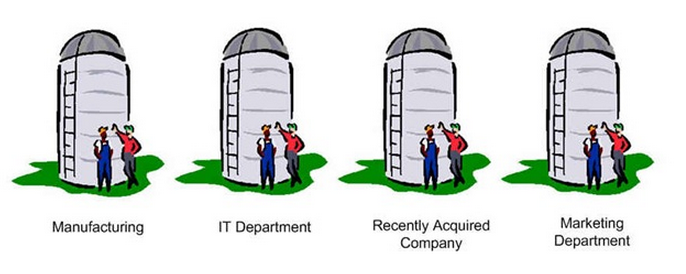 Just a few years ago, as the next generation of SaaS companies were beginning to scale, the idea of building a Big or Biggish SaaS Company using Silos-in-the-Enterprise was all the rage. For many, it still is. But there are a lot of flaws to this thinking. It’s worth taking a look at.
Just a few years ago, as the next generation of SaaS companies were beginning to scale, the idea of building a Big or Biggish SaaS Company using Silos-in-the-Enterprise was all the rage. For many, it still is. But there are a lot of flaws to this thinking. It’s worth taking a look at.
First, just to get on the same page … a Silo-in-the-Enterprise is a small or smallish group in a BigCo that adopts your product. Sometimes rogue, outside of procurement or financing using their corporate credit card. More often these days, officially, but just for one team. A group at PayPal decides to start using your CRM tool. Part of Google’s HR team starts using your project management tool. Etc.
I loved all my customers, like children. And sometimes I loved the Great Logo accounts even most of all, especially in the early and middle days. And Silos can get you logo accounts, which do matter. At least until you have enough of them.
But here’s the “problem” with that group at Google using your SaaS service:
- It’s a mediocre-to-poor organic Land-and-Expand strategy. Great that you got into procurement at eBay. But do you really think they’ll virally recommend you to the sales team? The odds are about 1% unless you really assist them. It can happen organically. But most apps don’t really spread outside of one group. VPs don’t spend their lunches talking to VPs in other functional areas about what SaaS apps they use. Not usually.
- Individual silos often pick their own tools. If you go through IT, the enterprise will likely standardize on a single tool. But just because you have 10 guys at Facebook using your product … 10 other guys in another group or department may well be using your competitor.
- They aren’t even always a great internal reference. Even if one functional group loves you, the other department just may not care. When I was a Fortune 500 VP, while I deeply respected my peer VPs … in almost all cases, if I went to buy a web service … I’d buy what worked for us. Not what worked for them.
- Hard to get much PR bang. Those 10 users at eBay aren’t going to get legal to sign off on a great testimonial. Sometimes, but not so often.
- Doesn’t work as well when real business process change is involved. Yes, perhaps every department can use Zoom the same way. But often, more complex apps require very different business process change in different silos.
- Your competitors may be closing the rest of the seats. In fact, assume they are. Most importantly, even if you get one group at Google using you … your more enterprise-focused competition may be selling directly to the CIO/CDO or other larger departments. You may win one battle, but they win the war by selling higher.
Now … having said this … at EchoSign / Adobe Sign we grew many of our Silos into large, six-figure accounts over time, especially as we scaled from $1m to $20m in ARR. Our first $1m TCV deal was all land-and-expand from a silo. But then, as we got bigger, and the space grew bigger … more and more of those deals became much larger deals adopted at a higher level, on Day 1. As the space matured, and the brands matured, Big Companies were comfortable picking a trusted vendor up front for all their users. And the silo deals became less important to the overall pie.
Taken to its logical extreme, I know several VP Sales in post-Scale SaaS companies that Do Not Allow silo-in-the-enterprise sales. No commission at all on them. The idea is they want to force the sales reps and team to go straight to the highest level of the org, and buy 1,000 seats to start … not 20. Because it’s 50x the revenue, for not that much more work, with less competitive risk and churn.
We didn’t do that. And I wouldn’t do that, myself. But I do see the theoretical logic in many cases. At Salesforce today, for example, my guess is today if a deal isn’t worth at least $10-$20 million … it no longer counts as a big deal. It just has to be true, when they are growing from $5b in ARR to $10b in ARR now.
So what’s my point here? Am I saying when you are getting your SaaS company off the ground, you should turn down IBM when someone wants to buy 20 seats? Of course not. They’re a customer. A great customer. You should celebrate that, and make them a big success.
But maybe just understand, your path to $20m and then $40m and then $100m ARR and beyond may not really be built on all those silos. Even Slack today has grown from a self-service, silo’d app that exploded … into one spending a huge amount of its time on traditional, six-figure+, enterprise-sales deals:
Whatever you do, don’t assume a small deal at a big company will magically blossom into larger, pan-enterprise deals without a lot of work. If nothing else, fly there. Nurture them. Figure out how you can really grow the account, proactively, aggressively, into a much larger deal.
Because I’m skeptical that on their own, these Silos will connect themselves very often. After all, they’re Silos.
(updated SaaStr Classic post)
silo image from here

